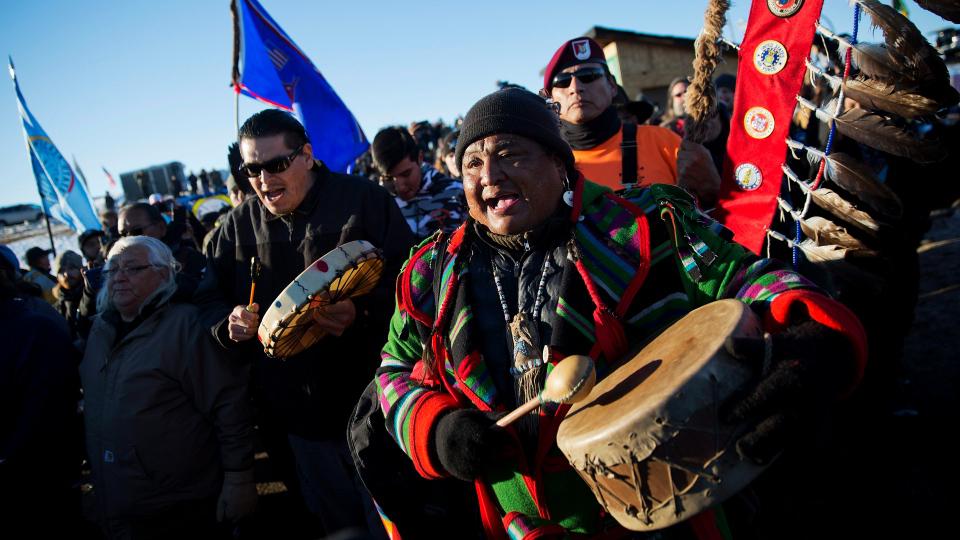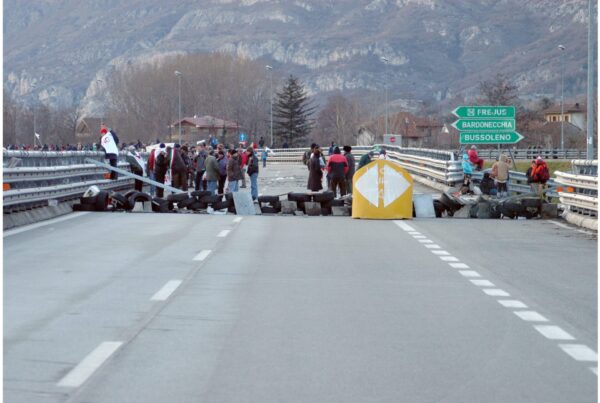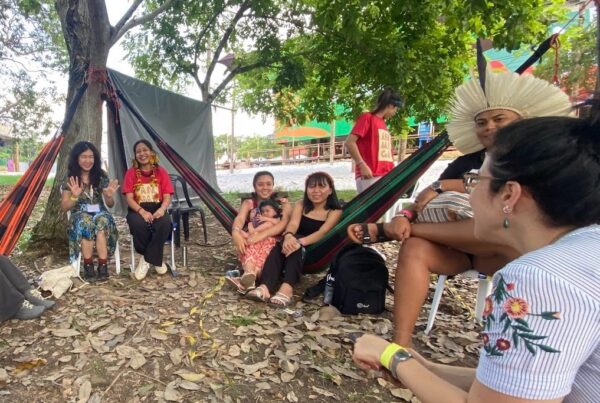By Álvaro Fernández-Llamazares*
The author proposes a journey to explore environmental justice movements through music amongst indigenous peoples from all over the world. Environmental protest songs enact different ways of telling that can connect ecological, political, spiritual and place-based meanings of environmental issues in unanticipated ways.
Through history, protest songs have shown to be a powerful tool to inspire movement for social change, uniting people in support of a common cause. From civil rights and women’s suffrage to anti-apartheid and environmentalism, protest songs have very much contributed to shape the course of history. As the Native Cree Canadian singer-songwriter Buffy Sainte-Marie stated in an interview for the American Indian magazine:
A great three-minute protest song can be more effective than a 400-page textbook: immediate and replicable, portable and efficient, wrapped in music, easy to understand by ordinary people.
Some of the earlier references to contemporary environmental protest music in the Western popular culture can be traced back to the 1960s and 1970s, when the tunes of Tom Lehrer, Joni Mitchell or Pete Seeger helped to awaken a collective global awareness about environmental issues. However, in this article, I am interested in looking specifically at examples of musical activism by indigenous peoples from the bottom-up and with a grassroots perspective.
For hundreds of years, indigenous peoples have been struggling to protect their land, resources and cultural identity against the dominant frames of neoliberalism and globalization. Facing pervasive forms of oppression and marginalization, indigenous peoples are increasingly using music as a powerful vehicle of resistance against colonization and environmental degradation in their homelands.
In this post I propose a journey to explore indigenous peoples’ movements calling for environmental justice through contemporary music. The list of songs compiled here is far from complete, but I hope that it gives a first approximation to recent examples of indigenous resistance through music.

The sound of the Native American drums echoes in most environmental protests against fracking in North America. Source: The Telegraph.
One of the latest movements blending indigenous music with environmental activism to call for environmental justice can be found in the Dakota Access Pipeline protests #NoDAPL, where the power of music was used to mobilize people against the construction of a pipeline near the Standing Rock Indian Reservation in North Dakota, US. The protest constituted the largest gathering of Native Americans in more than 100 years, and music became a crucial element in fostering a sense of spiritual resistance to the pipeline, as well as drawing international attention to the protests. For instance, A Tribe Called Red and Prolific The Rapper tell the powerful story of the Sioux blockade in North Dakota in their song ‘Black Snakes’:
The ‘Black Snakes’ music video shows footage from the assaults and aggressions faced by the #NoDAPL protesters, describing how their current socio-political situation is the consequence of historical marginalisation and oppression.
Along these lines, Hip Hop Caucus, creator of People’s Climate Music initiative – a project using music to inspire action to address climate change, and Taboo (from The Black Eyed Peas), partnered to make the song Stand Up/Stand N Rock as a tribute to all the unsung heroes standing in the #NoDAPL front lines. Folk rock legend Neil Young − known for other notable environmental protest songs such as the ones in his album The Monsanto Years, criticising the agribusiness behemoth Monsanto and coffee giant Starbucks − also wrote a song for the #NoDAPL movement. Indian Givers praises the strength of the many indigenous land defenders fighting to protect their sacred homelands from the impacts of pipelines. It is worth mentioning that many of Young’s concerts have raised funds to support the Athabasca Chipewyan First Nation’s legal battle against oil companies over Albertan tar sands in Canada.
Also in Canada, the ‘Idle No More’ movement, one of the largest aboriginal movements in Canadian history, has sparked performances, round dances and pow wows in public places across the country, calling for the respect of indigenous rights and sovereignty. The stance of the movement against resource exploitation on First Nations lands was picked up in the song Idle No More written by the Native Tuscarora singer-songwriter and activist Pura Fé. The song became one of the anthems of the movement and has been sung in several demonstrations and protest events, including in the front lines of the People’s Climate March in New York in 2015.
Ulali Project’s songs have accompanied many of the public acts of the ‘Idle No More’ movement, raising public awareness about environmental issues in indigenous lands.
Overall, all these songs show the rising trend towards organized cultural resistance to fracking amongst indigenous peoples across North America. For instance, the opposition to the Keystone XL pipeline also had its chants of resistance. Combining Native American drums and flutes with rap, the song Oil 4 Blood, by native Sicangu Lakota rapper Frank Waln, describes the deep indigenous connection to land as a central theme of the Native American struggles against fossil fuels. With quotes such as ‘Your oil is mud, they want the earth dead’ or ‘Making you rich, you soil my love’, Waln denounces the clash of values underpinning ecological conflicts in tribal lands and reservations.
The fact that indigenous values are often repressed by the expansion of commodity frontiers is a common thread in environmental protest songs by indigenous musicians and activists. As such, music provides a powerful medium to approach and embrace these value systems. Examples of resistance in indigenous music can be easily tracked through hip hop, which is transforming the way in which indigenous peoples perceive the environment and assert their cultural identities. Young indigenous peoples often find a deep understanding of self through rap and hip hop, fostering connection with the time-honoured traditions of oral storytelling and drumbeat, which speak directly to their indigenous historical background.
Music played also a significant role in the indigenous movement against the construction of a highly-contested highway crossing the emblematic Isiboro-Sécure Indigenous Territory and National Park (TIPNIS) of Bolivian Amazonia, the ancestral homeland of four native groups, Yuracarés, Trinitarios, Mojeños and Tsimane. As a response to the Government’s determination to build the road without their consent, the local indigenous peoples decided to undertake a march in defence of TIPNIS, largely considered as one of the most important public demonstrations in the contemporary history of Bolivia.
The songwriter Luis Rico wrote the song ‘Coraje’ (Courage) as a tribute to all the native marchers who walked by foot from Trinidad to La Paz − covering a distance of over 600 km and 4,000 meters of accumulated positive slope − to protest against the construction of the road. Along these lines, the powerful ‘Canción de cuna para una niña marchista’ (Lullaby song for a child marcher), sung by the indigenous Itonama leader Nazareth Flores, reflects the experiences of the children who participated with their parents in the march.
By the same token, one of the most powerful examples of environmental activism through music in Europe comes from the northlands of Sápmi (also known as Lapland), where the Sámi indigenous peoples are resisting a number of environmental grievances from the forest industry, damming and mining. Sofia Jannok, a native Sámi Swedish songwriter, activist and joiker − joik is a traditional Sámi form of song −, uses music to denounce the ongoing colonization of Sápmi.
In a recent interview for Uneven Earth, an online platform disseminating information on environmental justice conflicts around the world, she explores the historical ties between artistic expression and sociopolitical struggles in Sápmi, and how music is bringing Sámi issues to the fore. Her songs We are still here and This is still my land, infusing modern sounds with traditional joik, reflect on the struggle of the Sámi to regain territorial rights over their ancestral homelands. The song ‘Áhpi’ (Wide as oceans) talks about how this colonial legacy also has psychological implications, from mental health issues to suicide:
Sofia Jannok’s music reveals how the traditional lifestyle of the Sámi has been undermined by mining, hydroelectric dams, wind parks and the forest industry
The list of environmental protest songs that indigenous peoples are using to relay current indigenous struggles to broader audiences could be continued indefinitely with many more examples from different groups such as the Mapuche in Chile, the Adivasi in India, the Yolngu in Australia, or several tribes of the Xingu in Brazil (with the latter being featured in a recent ENTITLE blog post). Most of these songs are inspiring entire generations of indigenous peoples to rise up in response to environmental injustice.
As Mexican-American singer and activist Lila Downs, known for her fierce advocacy of indigenous peoples’ rights, puts it in the song ‘Semillas’ (Seeds): ‘They buried us, but they forgot that we are seeds’. Indeed, indigenous peoples’ contemporary music is weaving new spaces of resistance to colonial influences by celebrating indigenous cultural values that have often been oppressed by economic development.
Music allows indigenous peoples to put their struggles for the environment on the spotlight, bringing to daylight their voices, and interweaving knowledge and emotion to foster social reflectivity about, and action towards, environmental justice.
* Álvaro Fernández-Llamazares is an ethnoecologist working as a postdoctoral fellow at the Global Change and Conservation-GCC lab of the University of Helsinki, Finland. His research investigates biocultural conservation approaches in Bolivian Amazonia and the Kenyan Rift Valley, focusing on the development of constructive approaches for greater inclusion of indigenous peoples in conservation pursuits. He is the singer of the folk band Nòmades, which blends elements from protest song and world music to denounce environmental issues.






One Comment